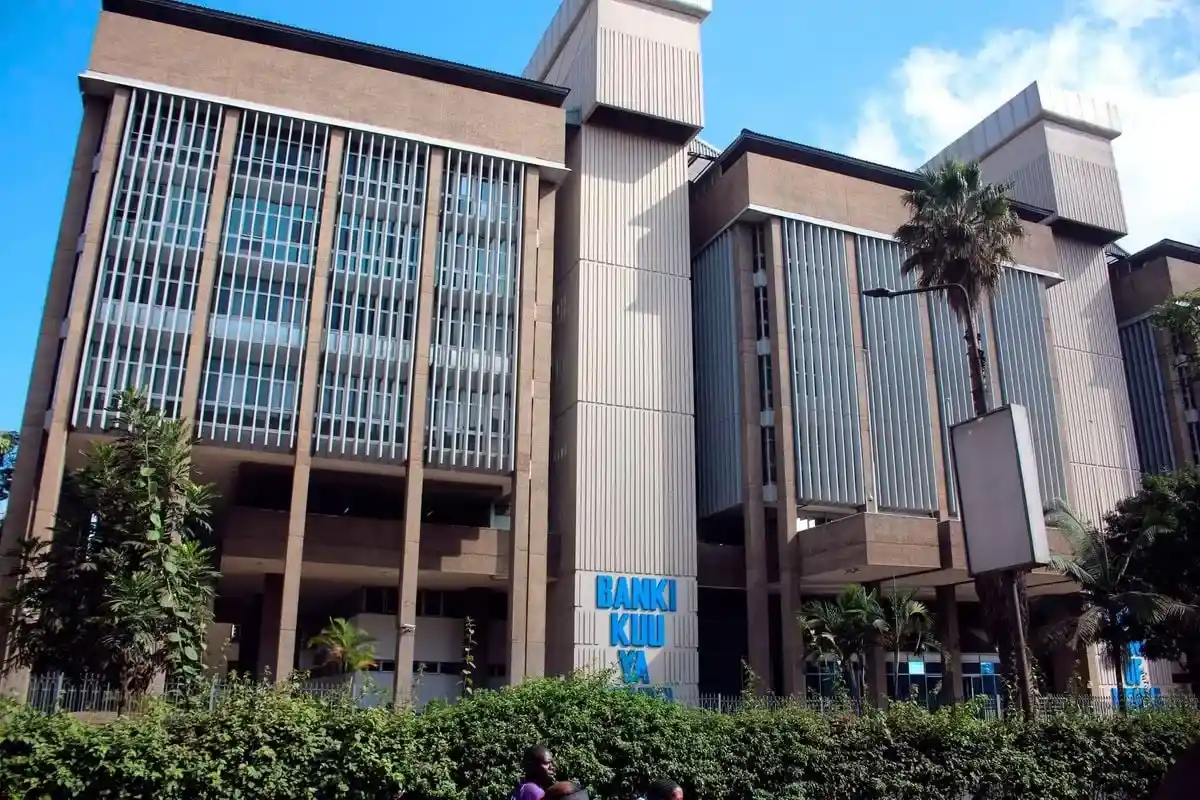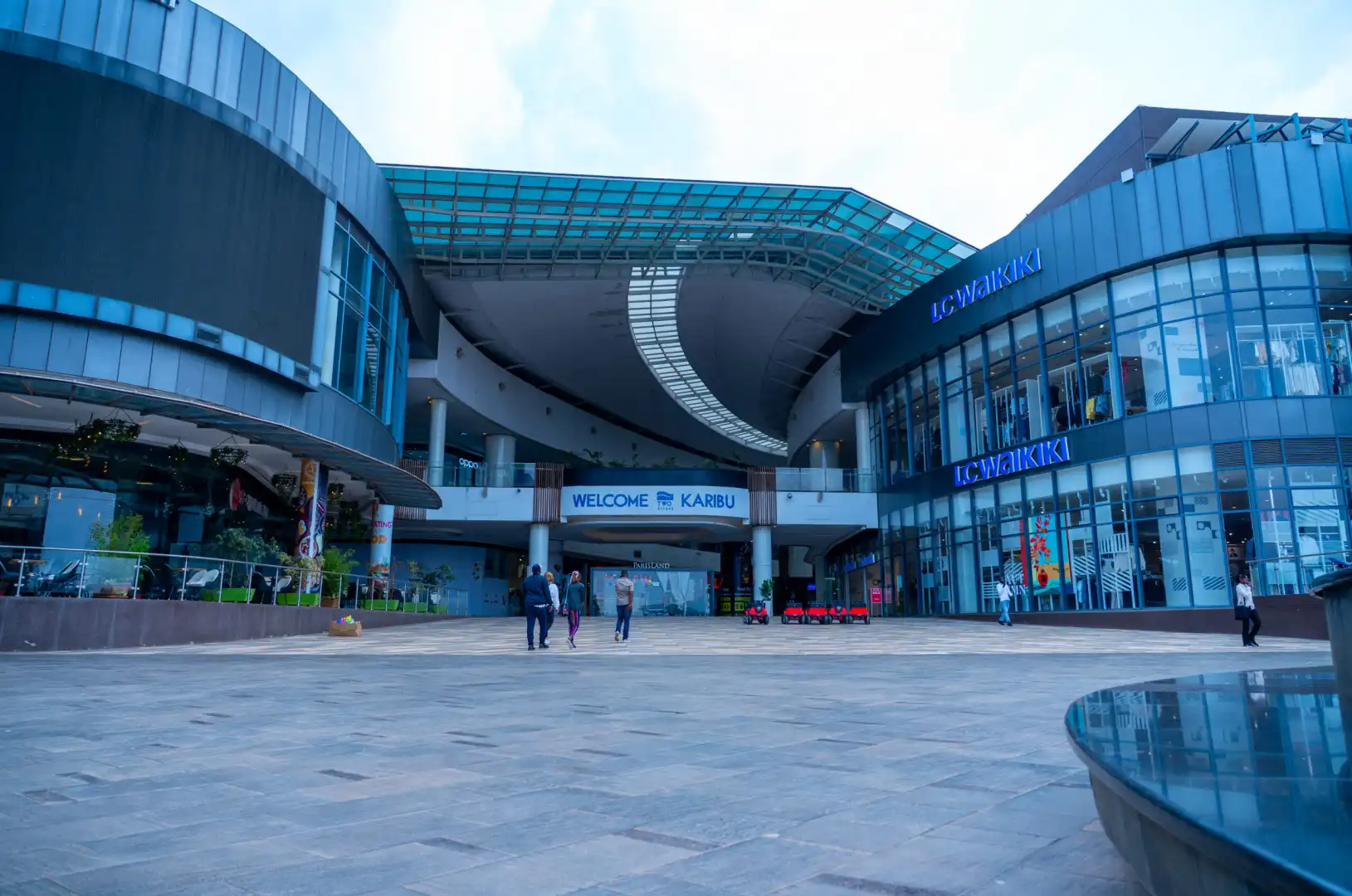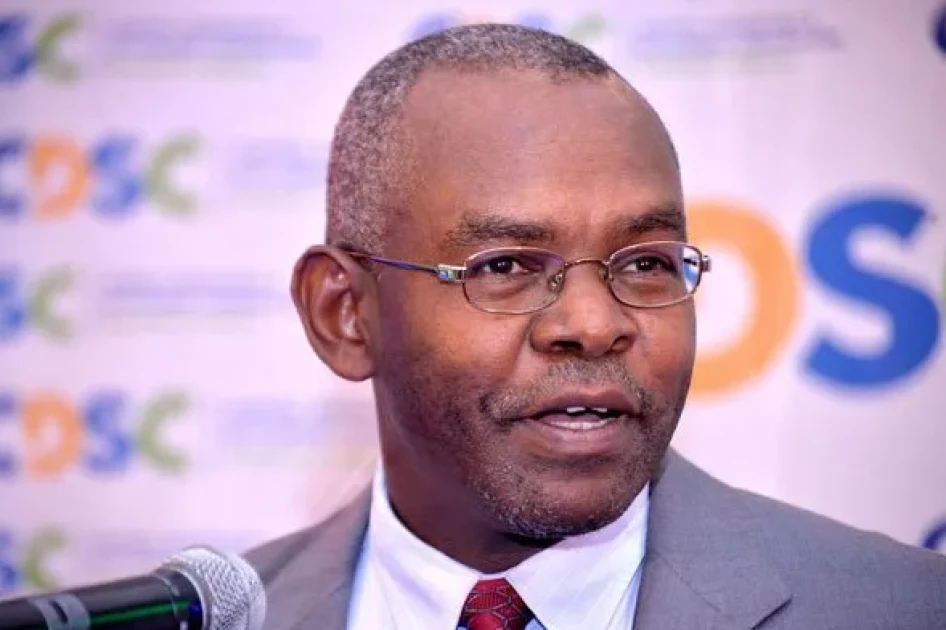Kenya’s domestic debt market is buzzing with renewed activity as the Central Bank of Kenya (CBK) officially launches the first infrastructure bond (IFB) auction for the 2025/26 fiscal year. This strategic move aims to raise a substantial KSh 90 billion, signaling the government’s continued reliance on the local bond market to finance its ambitious development agenda. The reopening, which commenced on July 21 and will run until August 13, 2025, involves two long-tenor, tax-exempt Infrastructure Bonds: IFB1/2018/015 and IFB1/2022/019.
This auction comes at a pivotal time when the monetary policy environment is turning more accommodative, and Treasury bill (T-bill) yields remain subdued. These conditions are increasingly prompting investors to shift their focus towards longer-duration bonds, which offer more attractive and stable returns over extended periods. The government’s proactive engagement with the bond market is critical to meeting its ambitious KSh 635.5 billion net domestic borrowing target for the current fiscal year (FY2025/26), underpinning the nation’s economic stability and growth aspirations.
Understanding Kenya’s Infrastructure Bonds (IFBs): A Pillar of Development Finance
Infrastructure Bonds (IFBs) are a specialized type of government security issued by the Central Bank of Kenya on behalf of the National Treasury. Unlike conventional Treasury bonds, IFBs are specifically designed to raise funds for critical infrastructure projects across the country. Their unique selling proposition lies in their tax-exempt status, meaning that the interest earned by investors is not subject to withholding tax, making them highly attractive, particularly to institutional investors and long-term savers.
The primary objective of issuing IFBs is to provide a stable, long-term financing mechanism for large-scale development projects that are essential for economic growth and improving the quality of life for citizens. These projects typically span various sectors, including:
- Transport Infrastructure: Roads, bridges, railways (like the Standard Gauge Railway), and port expansions (e.g., Mombasa Port).
- Energy Projects: Power generation plants (geothermal, wind, solar), transmission lines, and rural electrification initiatives.
- Water and Sanitation: Dams, water treatment plants, and urban sewerage systems.
- Digital Infrastructure: Expansion of fiber optic networks and digital hubs.
By investing in IFBs, individuals and institutions directly contribute to the nation’s development, participating in projects that create jobs, enhance connectivity, improve access to essential services, and boost overall productivity. This direct link to tangible development projects adds a layer of social impact to the financial returns, appealing to a broader base of investors.
The Monetary Policy Landscape and Investor Appetite
The current auction is taking place against a backdrop of an “accommodative monetary policy environment.” This refers to the Central Bank of Kenya’s stance of easing monetary conditions, primarily by lowering interest rates, to stimulate economic activity. The Monetary Policy Committee (MPC) of the CBK has been actively managing interest rates, with the Central Bank Rate (CBR) having been lowered to 10.00% in April 2025 and further to 9.75% by June 2025. This easing is aimed at encouraging commercial banks to reduce their lending rates, thereby increasing private sector credit growth and supporting overall economic expansion.
In an accommodative environment, short-term interest rates, such as those on Treasury bills, tend to decline. Indeed, recent data shows 91-day T-bill yields at around 8.128% as of July 21, 2025. When T-bill yields are subdued, investors seeking higher returns and long-term stability naturally gravitate towards longer-duration instruments like bonds, especially those offering attractive double-digit, tax-free returns, as is the case with the current IFBs. The Kenya 10-Year Government Bond Yield stood at 13.48% on July 21, 2025, illustrating the more attractive returns available in the longer end of the market.
This shift in investor preference is a boon for the government, as it seeks to fund its significant domestic borrowing target. The government’s net domestic borrowing target of KSh 635.5 billion for FY2025/26 is a substantial figure, forming a critical part of its overall financing strategy for the KSh 4.24 trillion national budget for the same fiscal year. Relying on the bond market, particularly IFBs, allows the government to secure long-term funds without resorting to excessive short-term borrowing, which can lead to higher refinancing risks and interest rate volatility. Kenya’s Medium Term Debt Strategy (MTDS) for 2025 outlines a borrowing mix aiming for 35% net external borrowing and 65% net domestic borrowing, emphasizing the importance of the domestic market.
Detailed Analysis of the Infrastructure Bonds on Offer
The current auction features two seasoned IFBs, providing investors with options based on their preferred tenor and redemption profile:
Bond: IFB1/2018/015
- Tenor: Originally a 15-year bond, it now has approximately 7.5 years remaining until full maturity. This makes it a medium-to-long-term investment.
- Coupon: 12.5000%. This is the fixed annual interest rate paid semi-annually to bondholders.
- Maturity: January 10, 2033. This is the date when the principal amount of the bond will be fully repaid.
- Redemption: This bond features a staggered redemption schedule: 40% of the principal will be paid on January 17, 2028, with the remaining 100% (of the initial principal) paid on January 10, 2033. Staggered redemptions can offer investors partial liquidity before full maturity.
- Tax: Withholding tax exempt.
Bond: IFB1/2022/019
- Tenor: Originally a 19-year bond, it has approximately 15.6 years remaining until full maturity, making it a truly long-term investment.
- Coupon: 12.9650%. This slightly higher coupon reflects its longer tenor and the compensation for locking in funds for a longer period.
- Maturity: January 28, 2041.
- Redemption: This bond also has a staggered redemption: 50% of the principal will be paid on February 9, 2032, with the remaining 100% (of the initial principal) paid on January 28, 2041.
- Tax: Withholding tax exempt.
The auction period runs from July 21 to August 13, 2025, with the bidding closing at 10:00 AM on the latter date. Settlement for successful bids will occur on August 18, 2025. Investors have the flexibility to submit either non-competitive bids, ranging from KSh 50,000 to KSh 50 million, or competitive bids, which start at a minimum of KSh 2 million per tenor. Non-competitive bids are typically filled at the average yield of accepted competitive bids, making them suitable for smaller investors who prioritize certainty of allocation over yield maximization.
The CBK provides an indicative price/yield schedule to guide investors. For instance, at a 12.5% yield, IFB1/2018/015 would clear at a “clean” price of 99.98, plus an accrued interest of KSh 0.96. “Clean price” refers to the bond’s price excluding any interest that has accumulated since the last coupon payment. Accrued interest is the portion of the next coupon payment that the seller is entitled to, based on the number of days the bond has been held since the last payment. For IFB1/2022/019, at a 12.5% yield, it prices at 102.59 with no accrued interest, indicating it’s being offered at a premium to its face value, likely due to its higher coupon rate relative to the indicative yield.
The tax-exempt nature of these bonds is a significant draw, consistent with all CBK-issued IFBs. This makes them particularly appealing to a wide range of investors, including:
- Pension Funds: These institutions have long-term liabilities and seek stable, predictable, and tax-efficient returns to meet future pension obligations. Kenyan pension funds are major players in the domestic bond market, aligning perfectly with the long-term nature of IFBs.
- Insurance Companies: Similar to pension funds, insurers manage long-term policyholder funds and benefit from the stable income and tax advantages of IFBs. Kenyan insurance companies are increasingly investing in government securities, including IFBs, to diversify their portfolios and ensure consistent returns.
- Long-term Savers and High-Net-Worth Individuals: For these investors, the tax-free double-digit returns offer a compelling alternative to other investment vehicles, allowing for significant wealth accumulation over time.
Market Confidence and Kenya’s Debt Management Strategy
This infrastructure bond reopening follows closely on the heels of successful reopened Treasury bonds (FXD1/2018/020 and FXD1/2018/025) in early July, which collectively raised KSh 66.65 billion against a KSh 50 billion target for general budgetary support. The strong uptake in these recent auctions is a clear indicator of robust market confidence in Kenya’s domestic debt instruments and the government’s ability to meet its financial obligations.
Unlike the FXDs, which provide general budgetary support, the current IFB auction is specifically earmarked for infrastructure projects. This transparency in fund utilization often enhances investor confidence, as they can see the tangible impact of their investments. The consistent demand for Kenyan government securities, especially tax-exempt IFBs, reflects a stable macroeconomic environment, relatively low inflation (Kenya’s overall inflation stood at 3.80% in June 2025, well within the CBK’s target range of 5±2.5%), and a predictable regulatory framework.
Kenya’s public debt composition has historically seen a mix of external and domestic borrowing. While there has been a recent shift towards external borrowing, the government aims to manage its debt sustainably. As of September 2023, the ratio of external debt to domestic debt stood at 54.3% to 45.7%, with the government working to trim domestic borrowing to ease pressure on interest rates and avoid crowding out the private sector. The reliance on domestic bonds, particularly long-term ones like IFBs, is a strategic move to extend the maturity profile of its debt, reducing the frequency of refinancing and providing greater stability in its debt management strategy. This helps to smooth out repayment schedules and offers more predictable debt servicing costs over the long run.
The government’s commitment to fiscal consolidation, as outlined in the FY2024/25 Supplementary Budget I, which aims to lower the fiscal deficit to 4.3% of GDP, further bolsters investor confidence. Reducing debt vulnerabilities and moving the present-value-of-debt to GDP ratio towards a target anchor of 55% are key objectives that make Kenyan bonds attractive.
Secondary Market and Liquidity for Investors
For investors looking for flexibility, secondary trading for both IFB1/2018/015 and IFB1/2022/019 will open on August 18, 2025, immediately after the auction settlement. These bonds will be traded in multiples of KSh 50,000 on the secondary market. The secondary market allows bondholders to sell their securities before maturity, providing liquidity if needed.
Additionally, the CBK offers a “rediscounting” facility as a last resort for investors who need to access funds before the bond matures and are unable to find a buyer in the secondary market. Rediscounting is typically available at 3% above the prevailing yield or coupon rate, whichever is higher. While it provides an exit option, it is generally discouraged by the CBK, as it often comes at a punitive rate to encourage investors to hold their securities until maturity. This mechanism, however, adds a layer of assurance regarding liquidity for bondholders.
Fueling Kenya’s Vision 2030: The Long-Term Impact
The funds raised through these infrastructure bonds are directly aligned with Kenya’s long-term development blueprint, Vision 2030. This ambitious national development strategy aims to transform Kenya into a newly industrializing, middle-income country providing a high quality of life to all its citizens by the year 2030. Infrastructure development forms one of the foundational enablers across all three pillars of Vision 2030: Economic, Social, and Political.
Under the Economic Pillar, Vision 2030 seeks to achieve an average Gross Domestic Product (GDP) growth rate of 10% per annum. Robust infrastructure is critical to supporting key growth drivers such as manufacturing, agriculture, tourism, and financial services. Significant road works, airport expansions (like JKIA, Moi International Airport, Kisumu International Airport), and ongoing developments in both the Northern and Southern Transport Corridors are direct outcomes of this focus.
The Social Pillar aims to build a just and cohesive society with social equity, where access to quality healthcare, education, and water and sanitation services is universal. Infrastructure bonds play a vital role in funding the facilities and networks required to deliver these essential services to all Kenyans.
Finally, the Political Pillar envisions a democratic political system that is issue-based, people-centered, and accountable. A well-developed infrastructure network contributes to better governance by improving connectivity, facilitating public service delivery, and enhancing overall national cohesion.
The continued issuance of IFBs demonstrates the government’s unwavering commitment to these long-term goals. The investments translate into tangible benefits:
- Job Creation: Large-scale infrastructure projects are significant employers, providing direct and indirect job opportunities across various skill levels.
- Enhanced Productivity: Improved transport networks reduce logistics costs and travel times, boosting business efficiency and competitiveness. Reliable energy supply supports industrial growth and reduces operational disruptions.
- Attraction of Foreign Direct Investment (FDI): A well-developed infrastructure base makes Kenya a more attractive destination for foreign investors, further stimulating economic growth.
- Improved Quality of Life: Access to better roads, clean water, reliable electricity, and modern healthcare facilities directly enhances the living standards of Kenyans.
Conclusion: A Strategic Path to Sustainable Growth
The Central Bank of Kenya’s launch of the first FY2025/26 infrastructure bond reopening, targeting KSh 90 billion, is a testament to the nation’s strategic approach to financing its development. By offering attractive, tax-exempt, long-duration bonds, the CBK is tapping into a robust domestic investor base, particularly pension funds and insurance companies, who seek stable and predictable returns.
This initiative is more than just a fundraising exercise; it is a critical component of Kenya’s broader economic strategy. It aligns directly with the ambitious goals of Vision 2030, aiming to build world-class infrastructure that will underpin sustainable economic growth, enhance social equity, and strengthen governance. The strong market confidence demonstrated in recent bond auctions bodes well for the success of this IFB reopening, signaling a collective commitment to Kenya’s future. As these funds are deployed, they will undoubtedly contribute to a more connected, productive, and prosperous Kenya, laying a solid foundation for decades to come.
Ready to take your career to the next level? Join our dynamic courses: ACCA, HESI A2, ATI TEAS 7 , HESI EXIT , NCLEX – RN and NCLEX – PN, Financial Literacy!🌟 Dive into a world of opportunities and empower yourself for success. Explore more at Serrari Ed and start your exciting journey today! ✨
photo source: Google
By: Montel Kamau
Serrari Financial Analyst
23rd July, 2025
Article, Financial and News Disclaimer
The Value of a Financial Advisor
While this article offers valuable insights, it is essential to recognize that personal finance can be highly complex and unique to each individual. A financial advisor provides professional expertise and personalized guidance to help you make well-informed decisions tailored to your specific circumstances and goals.
Beyond offering knowledge, a financial advisor serves as a trusted partner to help you stay disciplined, avoid common pitfalls, and remain focused on your long-term objectives. Their perspective and experience can complement your own efforts, enhancing your financial well-being and ensuring a more confident approach to managing your finances.
Disclaimer: This article is for informational purposes only and does not constitute financial advice. Readers are encouraged to consult a licensed financial advisor to obtain guidance specific to their financial situation.
Article and News Disclaimer
The information provided on www.serrarigroup.com is for general informational purposes only. While we strive to keep the information up to date and accurate, we make no representations or warranties of any kind, express or implied, about the completeness, accuracy, reliability, suitability, or availability with respect to the website or the information, products, services, or related graphics contained on the website for any purpose. Any reliance you place on such information is therefore strictly at your own risk.
www.serrarigroup.com is not responsible for any errors or omissions, or for the results obtained from the use of this information. All information on the website is provided on an as-is basis, with no guarantee of completeness, accuracy, timeliness, or of the results obtained from the use of this information, and without warranty of any kind, express or implied, including but not limited to warranties of performance, merchantability, and fitness for a particular purpose.
In no event will www.serrarigroup.com be liable to you or anyone else for any decision made or action taken in reliance on the information provided on the website or for any consequential, special, or similar damages, even if advised of the possibility of such damages.
The articles, news, and information presented on www.serrarigroup.com reflect the opinions of the respective authors and contributors and do not necessarily represent the views of the website or its management. Any views or opinions expressed are solely those of the individual authors and do not represent the website's views or opinions as a whole.
The content on www.serrarigroup.com may include links to external websites, which are provided for convenience and informational purposes only. We have no control over the nature, content, and availability of those sites. The inclusion of any links does not necessarily imply a recommendation or endorsement of the views expressed within them.
Every effort is made to keep the website up and running smoothly. However, www.serrarigroup.com takes no responsibility for, and will not be liable for, the website being temporarily unavailable due to technical issues beyond our control.
Please note that laws, regulations, and information can change rapidly, and we advise you to conduct further research and seek professional advice when necessary.
By using www.serrarigroup.com, you agree to this disclaimer and its terms. If you do not agree with this disclaimer, please do not use the website.
www.serrarigroup.com, reserves the right to update, modify, or remove any part of this disclaimer without prior notice. It is your responsibility to review this disclaimer periodically for changes.
Serrari Group 2025












